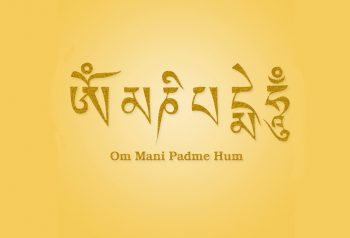

| Online: | |
| Visits: | |
| Stories: |

| Story Views | |
| Now: | |
| Last Hour: | |
| Last 24 Hours: | |
| Total: | |
Aum Mani Padme Hum: The Integration of Duality and Polarity
March 20th, 2017
Contributing writer for Wake Up World
‘Aum mani padme hum’ is a four symbol, six syllable mantra of Tibetan Buddhism. Considered the mantra of Buddha, this powerful invocation is said to contain the essence of all Buddhist teachings.
Since there is no direct English translation for this phrase, its meaning in English has been interpreted in various ways, and the mantra is often used by western practitioners as a sequence of sound whose spiritual benefit goes far beyond strict meaning. However understanding the meaning of both the symbols and sounds within this mantra can help us develop ourselves and elevate our consciousness, through the integration of duality and polarity.
The ‘aum mani padme hum’ mantra stands for universal compassionate wisdom and method applied to the macrocosm of surroundings through the microcosm of the self. It is a matrix of four; a set of symbols that reflects the integration of duality and polarity — the universal and individual, through and into each other, like metaphysical mirrors. The power of ‘aum mani padme hum’ is said to be activated by a fifth element, shri or hri, which refers to divinity itself.
‘Aum’ (also spelled ‘Om’) refers to consciousness in its four states and, specifically in this mantra, it symbolizes the universal macrocosm. ‘Mani’ means jewel and stands for the jewel that is the compassionate being. Within mani are the three jewels that are the Buddha, the Dharma (Buddhist teaching), and those around who understand the Dharma. Together they make the fourth jewel of integration called vajra. ‘Padme’ means lotus flower (symbolized with four leaves) and in this mantra symbolizes method and contains four aspects, yantra (philosophy), mantra (sound), mudra (physical positioning), and tantra (integration). ‘Hum’ represents the notion of please or gratitude, as well as the microcosm and integration. It contains four (and sometimes five) parts; earth, air, water, fire (and ethereal) elements and represents the five forms of awareness and the four foundations of mindfulness.
Previous articles by Ethan:
- Lessons from George Orwell’s ‘1984’
- Guardians of the Earth Unite! American Indian Prophecy, The Medicine Wheel, and The Four Sacred Directions
- A Little Green Revolution: the Rainbow Warriors will Heal the Earth Mother
- Why “Alternative” Media is the New Mainstream
- Tibetan Rites of Rejuvenation: a Guide to Meditation and Breath
- The Common Origins of Religions and Theology
- Understanding Ascension: The Geometry of Energy
- 11:11 – A Call to the Indigos
- The Mandala: The Sacred Geometry of Meditation
- The Seed of Buddha Meditation
- The Big “If” – What If Marijuana and Hemp Had Never Been Prohibited?
- Mutually Agreed Peace: Ending The Doctrine of Perpetual War
-
FACEBOOK]: http://www.facebook.com/joinwakeupworld (An interactive community of over 3,500,000)
[PINTEREST]: http://pinterest.com/wakeupword/
[TWITTER]: http://twitter.com/joinwakeupworld
[YOUTUBE]: http://www.youtube.com/joinwakeupworld
[GOOGLE PLUS]: https://plus.google.com/112452105795129310867/posts
[WEBSITE]: http://wakeup-world.com



